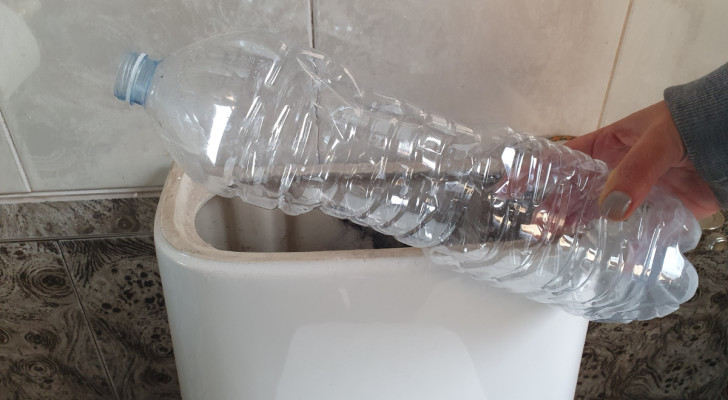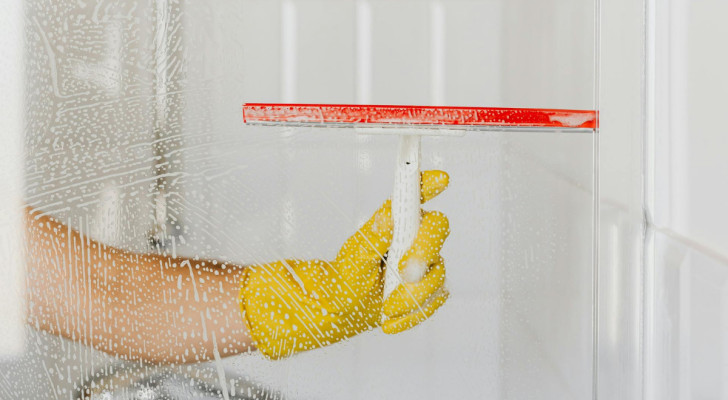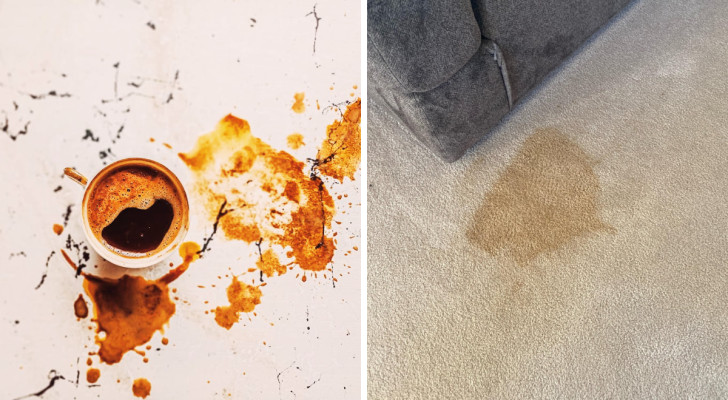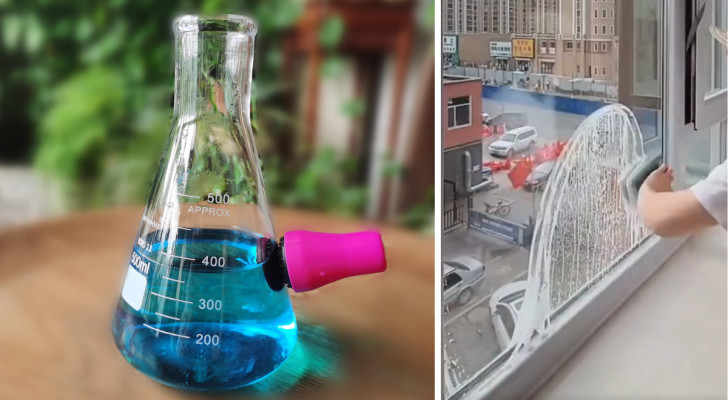Clogged drains? All the do-it-yourself tips to free them in a simple and effective way
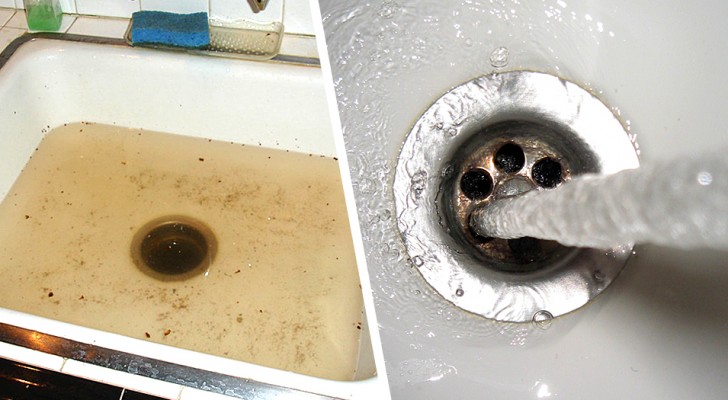
As much as we can be careful of everything that ends up in the drains of sinks, showers or bathtubs, it is inevitable that every now and then obstructions form that prevent the correct flow of water. Residues of food, oil and grease from the kitchen, or dirt, scraps of soap and creams but above all hair in the bathroom can easily create occlusions in the pipes, and we find ourselves with water that does not drain even for a long time.
In addition to causing unpleasant odours, these occlusions can also cause some damage to the pipes in the long run, so it is always good to promptly deal with the removal of the problem. However, before resorting to chemical products for draining, which are often toxic and dangerous to health and the environment - as well as possibly harmful to the pipes themselves - we can also try a series of alternative remedies, both mechanical and based on ingredients readily available in the kitchen and beyond.
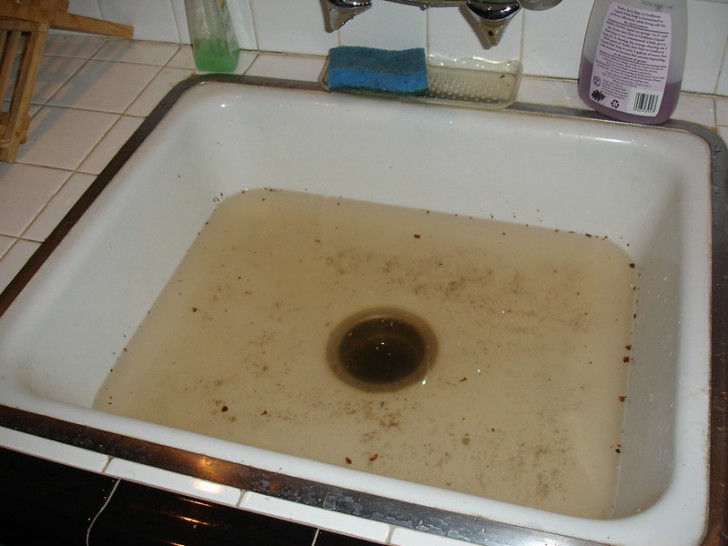
For the sinks
Since very often part of the plumbing of the pipes is made up of greasy material, a fundamental component that recurs in every do-it-yourself remedy for clearing the drains is boiling water: if the situation is not too serious, sometimes it is enough. pour a pot down the drain to remove the congestion, dissolving the fatty part. If repeating this method a second time does not give results, you can try adding a series of ingredients or you can use various tools.
Use the suction cup plunger
It is a very simple method but if you do not proceed in the right way sometimes you risk compacting the obstruction rather than removing it. First, you need to fill the sink tub with a little hot water, and then place the suction cup right on the drain. If the sink has two basins, cover the other with a cloth or sponge.
Firmly grip the plunger handle and without separating the suction cup from the sink, move it up and down quickly, then lift the suction cup and check if the water drains more easily. Continue to use the plunger in this way until the drain returns to normal operation.
Boiling water and salt
For cases where the obstruction is not particularly serious and you want to dissolve it rather than remove it mechanically, try with water and salt. First pour 60 grams of fine cooking salt on the drain, then boil a liter of water and pour it over the salt. It may be necessary to repeat the operation several times, and at the end of each cycle rinse by running hot water from the tap.
With vinegar and baking soda
Also in this case, start by pouring boiling water down the drain, then follow by 100 - 120 grams of bicarbonate, and if necessary help yourself with a wire (even a straightened crutch) to try to get the bicarbonate down as much as possible in the drain, and let it act for a few minutes. Meanwhile, create an equal parts mixture of hot water and vinegar and pour it down the drain, covering the drain with a plug. Leave for 10 minutes. After this time, pour a cup of hot water to rinse. If it seems to you that the drain has not yet been completely cleared, pour another four cups of boiling water. If necessary, you can repeat the operation by pouring bicarbonate and vinegar again.
With salt, vinegar and baking soda
This is the solution to use when the obstruction is quite substantial. You will need: 60 grams of baking soda, 40 grams of salt, 230 ml of vinegar. Start by mixing the baking soda and salt together and pour them over the drain, then heat the vinegar and pour it over the other ingredients to drain them down the tube. At this point, put a cap to close the drain, so that the foam that forms does not come out. Wait 20 minutes and rinse with hot water.

Sodium hydroxide
Caustic soda (or sodium hydroxide) is a substance that you can buy at hardware stores, home improvement stores, or online. It is a very corrosive substance that must be very carefully, and always using adequate protection, such as gloves and a mask.
Fill a bucket with three liters of water, add 750 ml of caustic soda and wait for the solution to start to foam. Pour everything into the sink and wait 20 minutes, then rinse with boiling water
With citric acid:
Citric acid is the greener alternative of many house cleaners, and is also useful as a do-it-yourself remedy to unblock drains, because it has good effectiveness against limescale and works well as a detergent, also removing unpleasant odors. .
To use it you have to mix 150 grams of it in a liter of very hot water, making it dissolve well. If you want, you can also add 150 ml of white wine vinegar. The important thing is that the water that will go down the drain is hot, in order to better dissolve the obstruction of fatty substances.
Sodium carbonate
Boil a liter of water. When it's almost ready, pour 230 grams of soda ash (also known as laundry soda) down the drain. Pour the boiling water slowly, several times. You will realize that the obstruction is gone when the water drains quickly, and you can finish pouring it quietly. If it remains in the sink, pour another 230 grams of soda ash into the water and let it sit until it is able to dissolve the obstruction and then rinse again with boiling water.
Sodas
Fizzy drinks like Coke can come in handy for clogged drains, and should be used at room temperature. Try pouring a two-liter bottle and let it sit (without using the sink) for at least two hours. There are those who act all night or even 24 hours. Then pour in a medium pot of boiling water to rinse well, and the congestion should be gone.
With a probe
There are flexible hoses with a crank handle or pliers and a tip capable of grasping the material that obstructs the drains that can be useful in these cases. To use them, sometimes it is necessary to disassemble a few pieces of the piping under the sink, so first place a large basin where water could escape.
Insert the probe into the drain lowering it until you encounter an obstruction, and move it so as to gently break the mass that creates the obstruction. If it is equipped with some sort of hook or hook, make sure to hook the obstruction and pull it away towards you. Sometimes, to better reach the obstacle in the pipes, it is necessary to disconnect the piece of elbow pipe immediately under the sink, by hand if it is in PVC or with the help of parrot pliers for metal ones. Drain the excess water by collecting it in the basin. Then insert the probe into the pipe that comes out of the wall, until it meets resistance, at which point rotate the probe to make it hook into the obstruction, and continue to extract it and rotate it until the obstruction is cleared. Reassemble the pieces of the pipe properly and run hot water to check if the drain works. If the water is running down slowly, use the suction cup to further clear the drain.
Solid-liquid aspirator
If you have a machine that can suck up both liquid and solid material, attach the rubber cup of the plunger to the end of the vacuum cleaner hose and operate the appliance should make a different noise than usual when trying to vacuum what is obstructing the drain. Keep it on until the noise changes, but if it takes more than a minute, turn off the vacuum, and imitate the movement you would make with a normal plunger, then restart the machine.
If none of these methods (which, however, it is advisable not to combine) should work, then it will be necessary to involve someone with an expert, but in most cases they are more than enough to avoid it.
Better still, try to prevent the formation of obstructions as much as possible: therefore, remember to empty the dishes of any food residue before placing them in the sink, and to always use (even in the bathroom) the filters for the drain, so that almost exclusively liquids end up in the pipes.
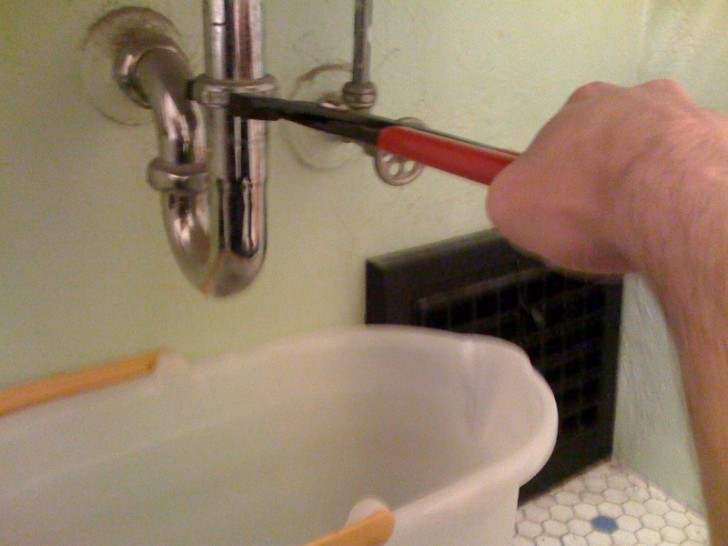
For the shower
The shower drain can become clogged due to limescale concretions or much more often due to skeins of hair or hairs which also remain entangled with soap residues. The methods described for unblocking sinks can also be used for the shower, excluding those that involve removing the pipes under the drain. In any case, to prevent the formation of such problems, which in the case of the shower are more difficult to solve if they block the pipes under the floor, it is always good to keep filters or metal nets above the drain, just to prevent them from ending up there. hair.
Crutch
It is the most common mechanical removal method, which is used above all to remove masses of hair stuck in the drains: just take an iron crutch and straighten it with pliers, shaping the hook so that it becomes a long and thin hook, capable of slip into the drain. When you have created this tool, put it in the drain and remove everything that blocks the flow of water, perhaps with the help of a torch. If the obstruction is so compact that it blocks the water, it should be possible to pull it out entirely without breaking into several parts, but to make sure you have everything removed, keep trying to pick up the material that is blocking the drain several times, until it does not come up completely free of hair and dirt. At that point, try running some water to check that the drain is working normally.
Similarly, a screwdriver thin enough to fit into the drain holes can be used. To insert it, however, you must first remove the grille that covers the drain. It is better to use a flashlight to see what has formed immediately under the grill, and sometimes the tip of the screwdriver is really enough to pull up the lump that blocked everything near the mouth.
If you can't catch everything, help yourself with a wire.
You can also try with a suction cup, or with special probes and hoses, just like you proceed in the case of sinks.
If mechanically you have not been able to remove everything, you can also try using bicarbonate, pouring 300 grams down the drain and followed by 100 ml of white vinegar. Just like in the case of sinks, close with a cap and let it sit for 30 minutes. Meanwhile, boil a liter of water in a pot or kettle and after the half hour indicated, pour the water down the drain. This should free the residues already dissolved by the action of the baking soda and vinegar.
For the bathtub
Also in this case, the crutch can be used, since often even in the shower the obstruction is due to hair in the drain.
Alternatively, you can also use a plumber's probe. As in the case of the shower, it will be necessary to remove the grate (drain) that covers the drain, and then insert the probe until it meets the obstacle, which very often is right near the mouth. Sometimes a flat screwdriver is enough to remove the drain, leveraging the edge, other times you need to unscrew some screws. In proceeding, always remove all the dirt that you notice around the cap and the drain, perhaps even with the help of an old toothbrush.
These probes have a tip equipped with hooks suitable for grabbing the hair, so as to pull it up while you move the handle. When you remove the probe, always make sure to clean it of all dirt it has come into contact with, so that it is always in perfect working order. Run some water to see if it flows properly, and if so, close the drain by reassembling the various parts.
If you are unable to eliminate all the dirt with these methods, you can proceed with boiling water, vinegar and bicarbonate as indicated for the shower, or try with the chemical detergents to buy, following the instructions on the package.
